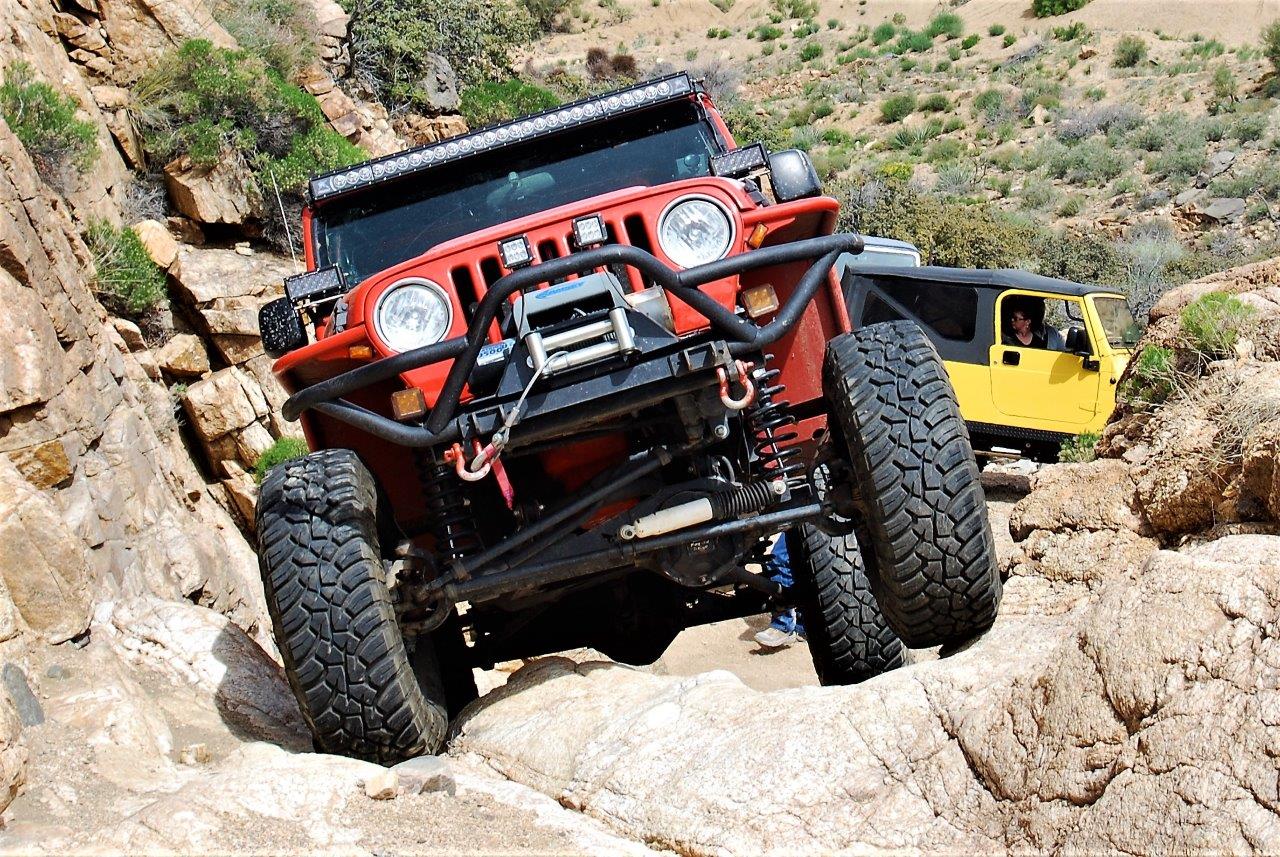
Three pairs of LED lights and one overhead light bar look good on the Jeep and light the highway and the trail or dunes with nearly 33,000 candlepower, not including the headlights. (Image/Jim Brightly)
As we get older, our eyes age right along with our other muscles. We can enhance our muscles with exercise and better tools, but other than wearing glasses, we can’t improve our eyes with exercise.
So, to improve our vision we must improve our tools—in this case, Rigid Industries LED light fixtures.
Rigid offers lights for almost every application, from white marine lights to black off-road lights. With the company headquarters and manufacturing plant in Phoenix, AZ, we enjoyed working with fellow Arizonians to outfit our 2005 Jeep Wrangler Unlimited Rubicon with all the lighting it’ll need for the foreseeable future.
Below is the list of lights we chose for this Jeep.
We wired each light used for this article—or pair of lights, if they came in a kit—to the Jeep’s electrical system somewhat differently. We’ll explain below how each was wired into the system, and why we did it that way.
Fog Lights
Rigid Industries D-Series Dually Lights 20211
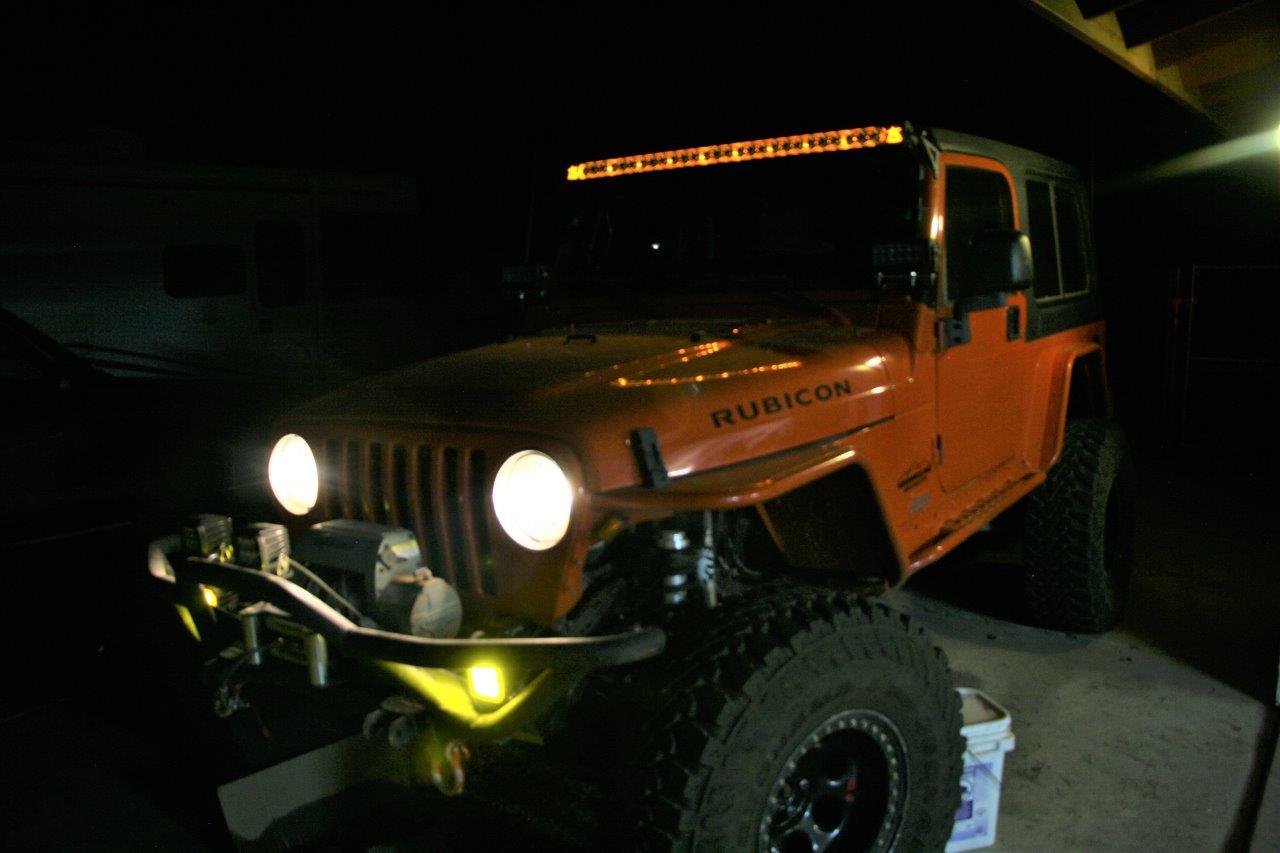
We chose amber background lighting for the overhead light bar because we feel it complements the orange paint on the Jeep and almost appears orange when on the Jeep.
With only four LEDs, this lightweight 3×3-inch D-series light (which is street legal) has a low amp draw but puts out 1,568 lumens. It can be mounted anywhere from the A-pillars to the bumpers and is extremely durable. Kit comes with two Dually LED lights, wiring harness, and a switch. The pair features a 20-degree flood pattern, 50,000+ hour LED lifespan, instant on/off with no warm up, over/under voltage protection, cast aluminum housing, polycarbonate lens, and integrated thermal management. They are assembled in the USA.
We applied a pair of amber lenses to these lights to aid the visuals during bad weather driving. These fog lights pretty much saved our trip when we hit a blizzard on I-70 near Aspen by providing a low angle beam pattern with minimal reflection. We were one of the few vehicles still able to drive in the snow because of the Jeep’s four-wheel drive and these fog lights.
Fortunately, the 2005 Wrangler Rubicon was equipped at the factory with optional fog lights, which were controlled by a switch on the turn signal lever. We were able to reuse the same circuitry, which allows the fog lights to be on only when the headlights’ low beams (or running lights) are on. In other words, the fog lights can’t be used when the high beams are on. You may need a good shop manual with electrical circuit diagrams should you decide to go this same route, or you could use the existing cables. All necessary wiring, relay, and switch were included in this kit, but they were not used since we utilized the OEM circuits.
Spot Lights
Rigid Industries D-Series Dually D2 Lights 50231
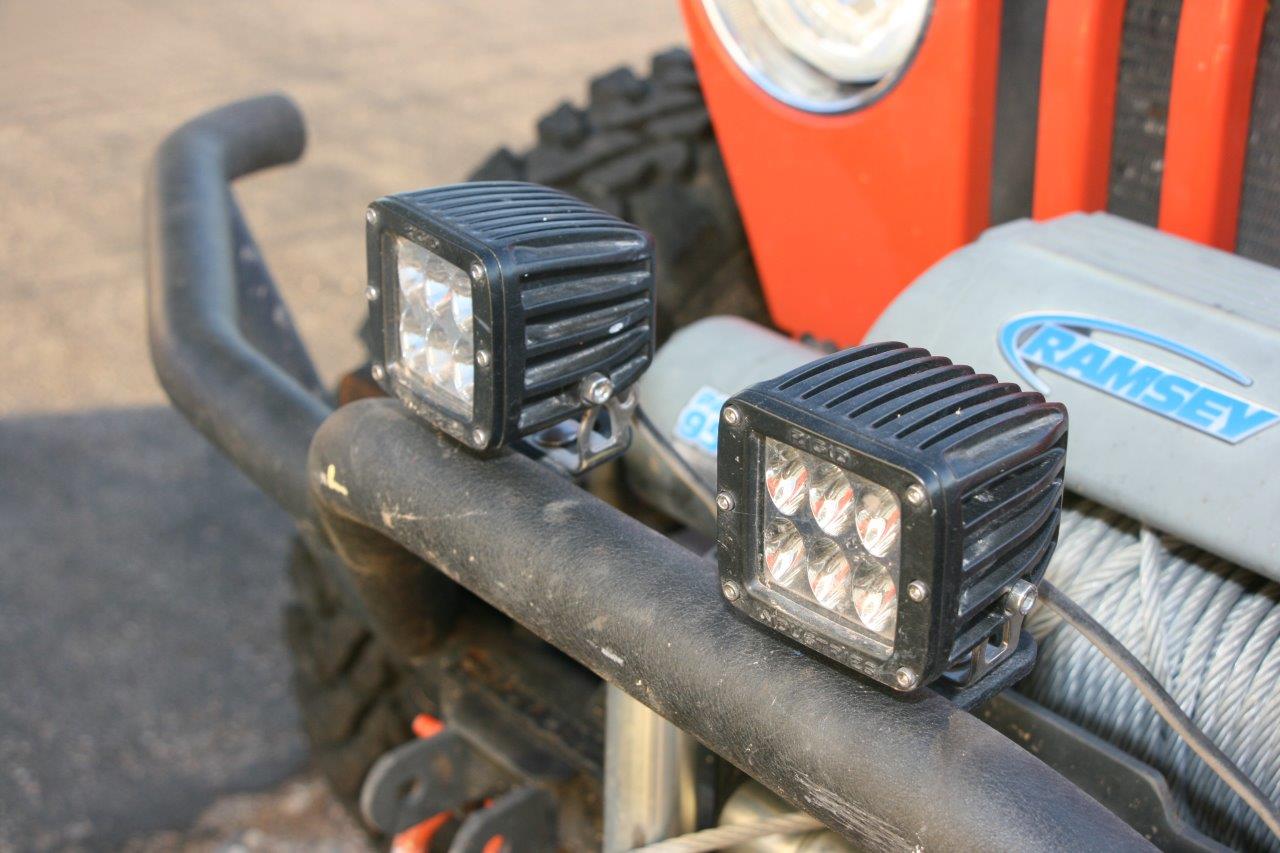
The Rugged Ridge bumper also provided grille guard mounting tabs for the driving lights, which should be mounted higher to allow a great range to their beams.
These driving lights are also D-series lights (also street legal), the lights are slightly larger brothers to the 3×3-inch fog lights, and each has six LED lights in a 3-1/8×3-1/4-inch package, which puts out nearly double the lumens with the additional two LEDS (3,096) while using just 2.5 amps and 34.5 watts. They also feature a 20-degree flood pattern, instant on/off with no warm up, over/under voltage protection, cast aluminum housing, polycarbonate lens, and integrated thermal management, and are also assembled in the USA.
It is one of the most versatile lighting products on the market today that produces extremely high output while consuming very little power, and its compact size and shape allow it to fit almost anywhere and be used for virtually any lighting application. The Dually is designed to project far and wide. It uses a narrow, oval-shaped reflector that projects both spot and flood beam patterns at the same time.
These slightly larger D-series lights were wired directly to the battery with a switch on the dashboard (wiring, relay, and switch included in the kit). They weren’t wired into another lighting circuit, so they can be used without any other lights involved. Therefore, in addition to using them to supplement the headlights, they can be used solo—which works great for those highways where DRLs (daylight running lights) are required for safety during daylight hours.
Cowl Lights
Rigid Industries E-Series LED Lights 106612
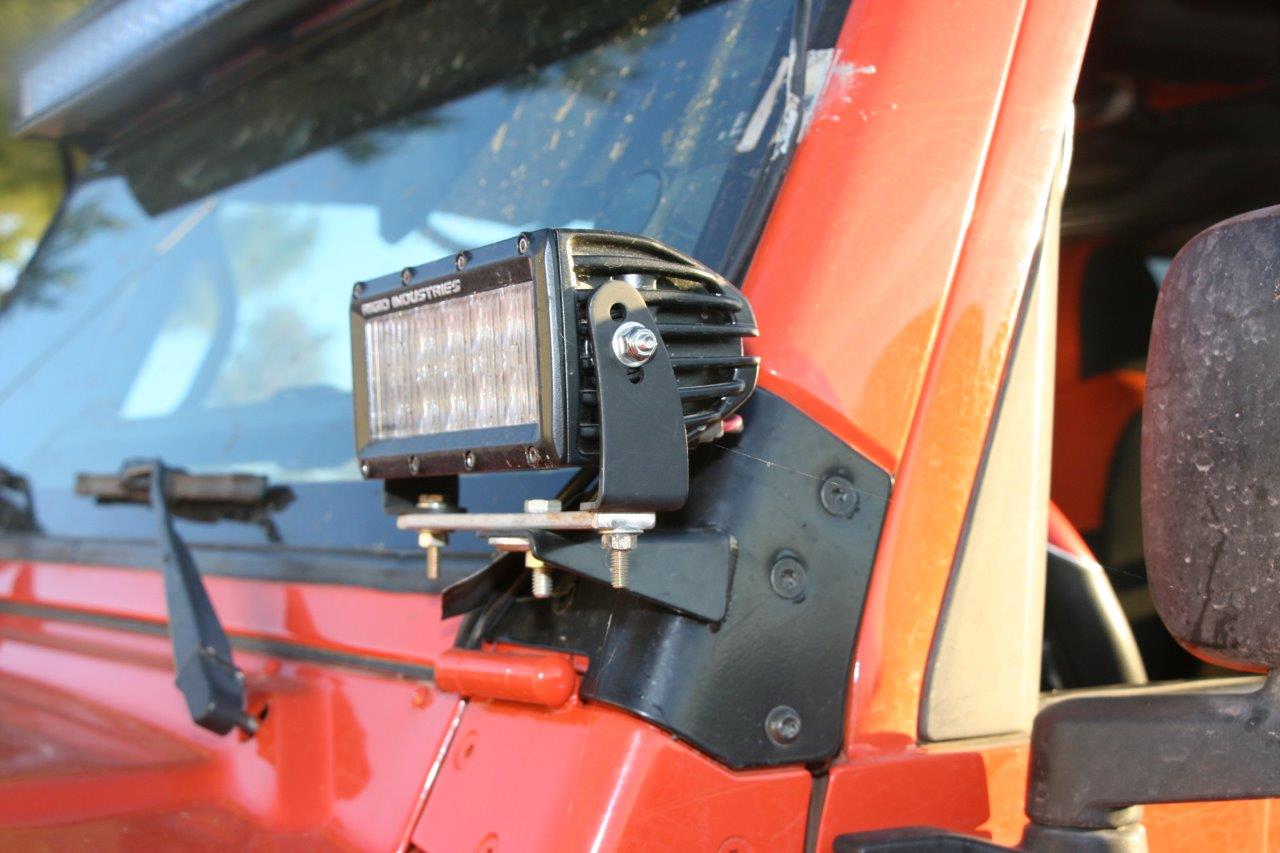
The driving lights can be easily adjusted for height and angle with this combination of mounts and adapters.
Known as the E-series 6″ (wiring, relay, and switch included in the kit), these lights—along with the above mentioned fog and spot lights—are SAE Compliant, which means they can be used on-road or off. Therefore the E-series can be used as an auxiliary high beam while on the freeways. The E-series light (with 12 LEDs) puts out 5,280 lumens while pulling just 2.85 amps and 41 watts.
These 6-inch-wide lights, being street legal, were perfect for mounting just above the cowling and below the windshield on the Jeep’s A-pillar. An additional advantage to this mounting location gave the lights excellent highway coverage because of the added height. To ease their use—and to better control them—we wired them into the Jeep’s high beam circuit, which means the circuit’s relay is controlled by the high beam lever just as the Jeep’s headlights are. However, we didn’t want them to come on every time we hit the high beams so we also mounted a toggle switch on the dash (the toggle switch is also illuminated when the circuit is in use). Now, when we’re driving down the highway with no opposing traffic, we flip up the toggle and now we can control the cowl lights with just the high beam lever, which makes night driving much less stressful.
Light Bar
Rigid Industries Radiance LED Light Bar
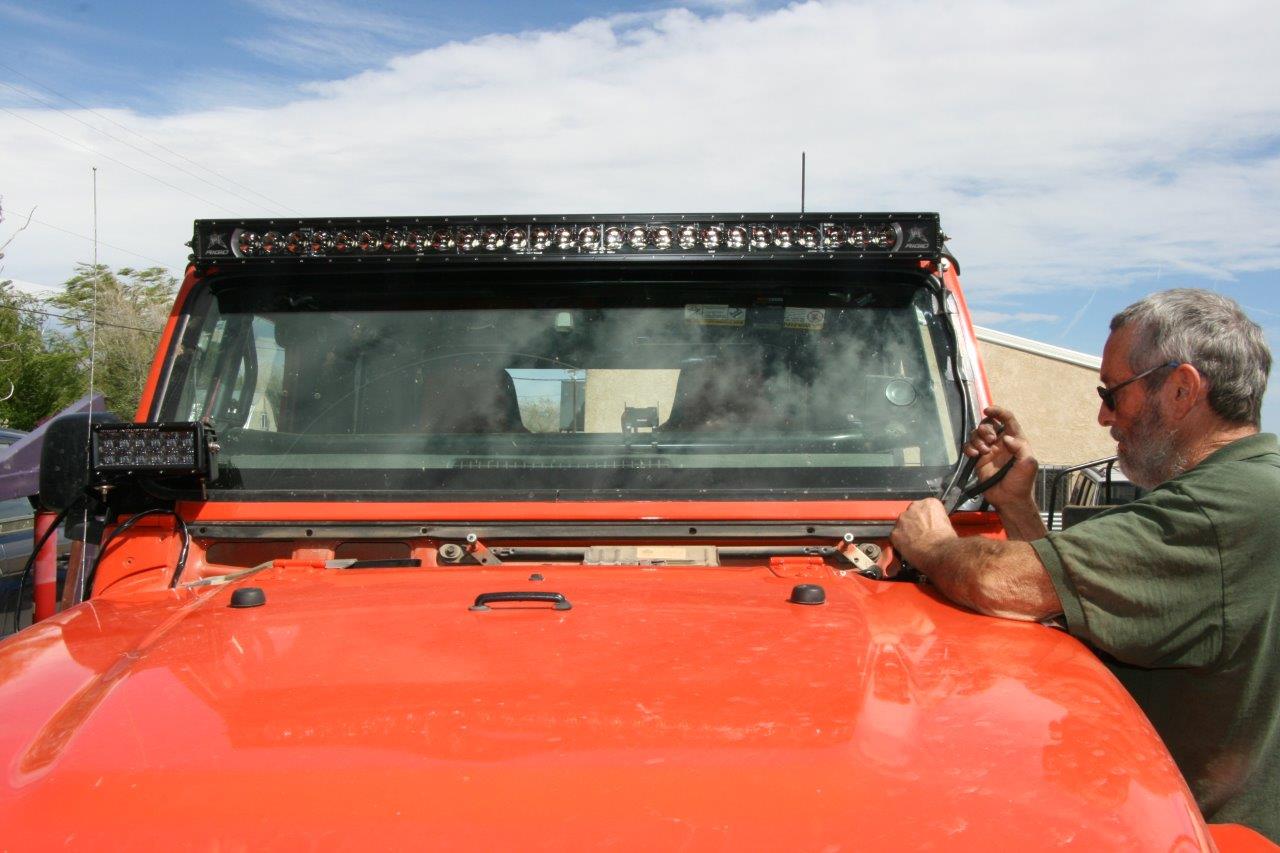
Once the Radiance lightbar was mounted with its included brackets, Dave Schupp finished the wiring.
Its full name is Radiance 50″ LED light bar with an amber back light, but we’ll call it a light bar—and it is really cool. When not in use, but with the Jeep’s headlights on, the amber back light illuminates the full width of the bar. If you don’t like the amber back light, you have a choice from five colors: amber, blue, green, red, and white. According to Rigid Industries, the Radiance is built with the same high-grade aluminum alloy housing as the E-series. Inside, the light bar is equipped with a black exposed printed circuit board and optics that combine the attributes of a spot and flood beam pattern. Fifty inches long, the light bar’s other dimensions are 6.25×7×6.25 inches. It pulls 278.7 watts and 19.9 amps while pushing out almost 16,000 thousand lumens (15,876, to be exact)!
Not being street legal, we pretty much ignore this fantastic 50-inch light bar while on the highway or driving around town. But once we’re in the dirt, playing in the sand dunes, or looking for an isolated, back of beyond campsite, it comes into its own. This is where you really want to say, “Let there be light!” every time you flip the toggle switch up because energizing this Radiance light bar is like touching off a mini-sun! Combining its full width and the combination of flood and spot lights gives you one hell of a “bubble of radiance”. Nearly sixteen thousand lumens illuminate a huge swath of ground in front of your Jeep. There are a few caveats, however. Unlike the other LED lighting kits in this article, no wiring harness is included with the Radiance light bar—you’ll have to order wire harness SKU40200 ($80). Also you’ll probably need to order one or more sets of the Rigid Industries LED Light Bar Resonance Damper (SKU40280/$15). We call them “puppy’s feet” because that’s what they look like and they’re for damping the highway whistle and howl caused by wind at high speeds. This three-piece set can be slid on to any location on your Rigid Industries LED light bar to absorb harmonic distortion from the fluting of the extruded heat sink fins in your LED light bar. Depending on location, you may need more than one set of puppy’s feet.
When the headlights and all seven Rigid Industries’ LED lights are on, it’s like driving in sunlight—you may even want to wear shades. Cars more than a mile away will request that you dim your lights, and you’ll need an electrical system that’s at least equal to OEM specifications.
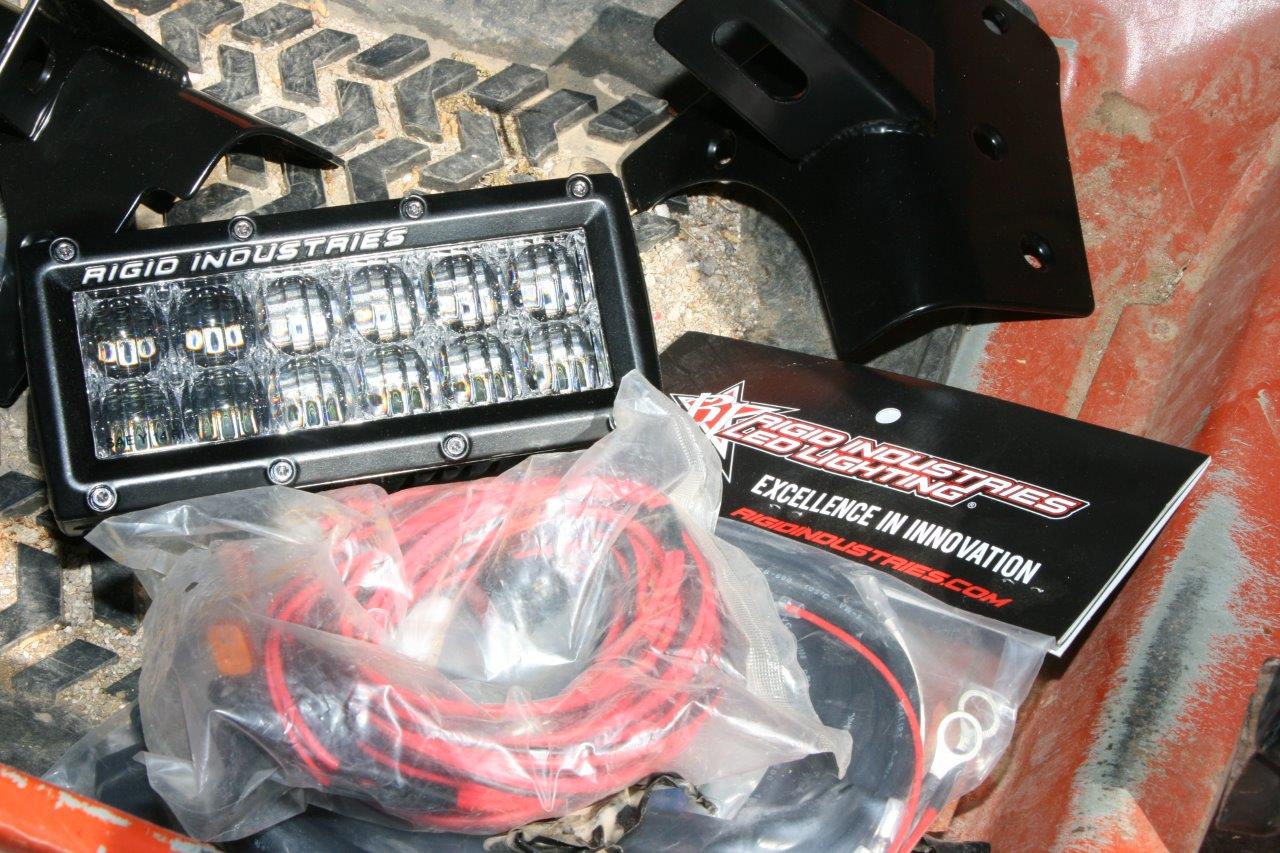
Each LED light kit—except for the overhead light bar—from Rigid Industries comes with a mounting bracket, a complete wiring loom, a switch, and a relay (if needed).
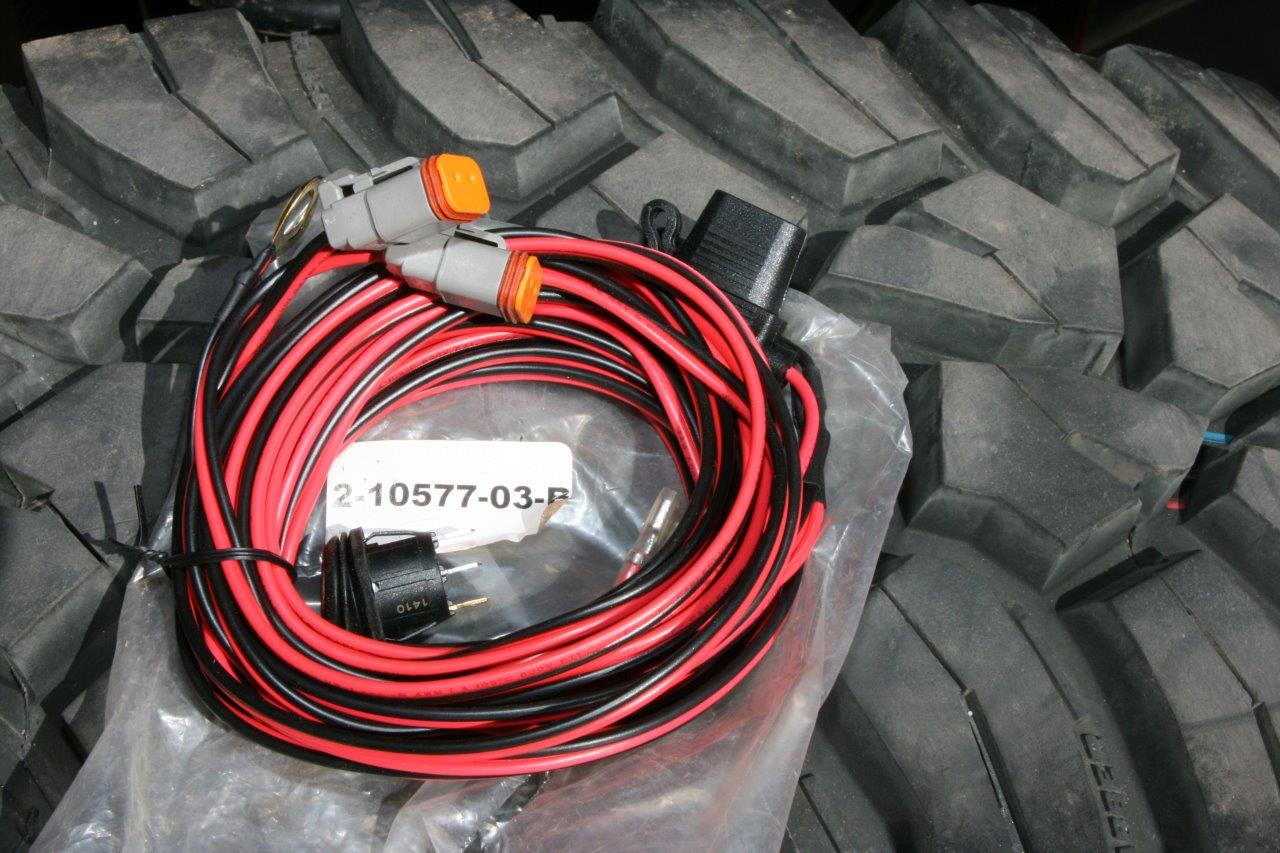
This is a typical Rigid Industries’ wire loom.
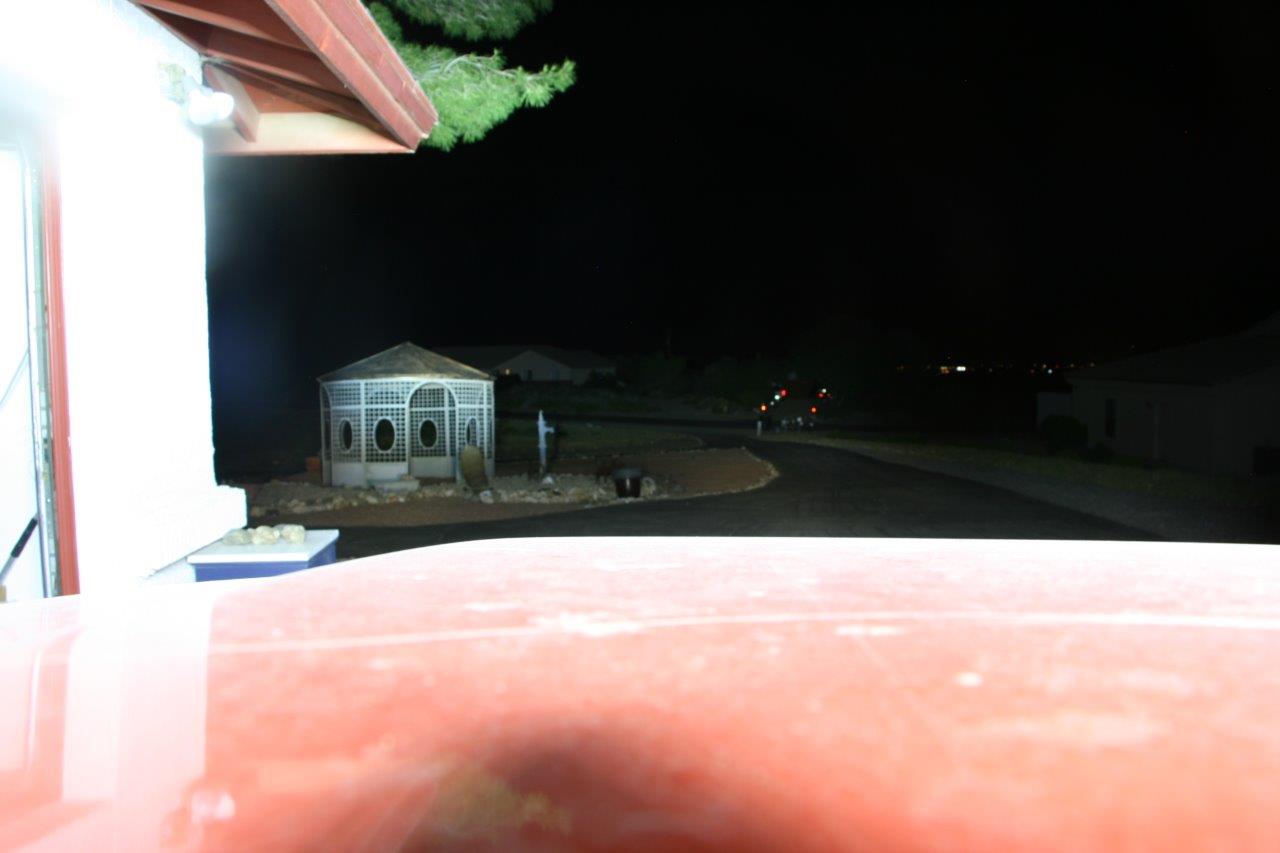
In trying to illustrate how well these lights fill the trails and highways with light, we found that it is extremely difficult to take photos that show what these lights can accomplish. In the next several photos we add a set of lights to base system of headlights and fog lights (3,136 lumens)—which is what you see here.
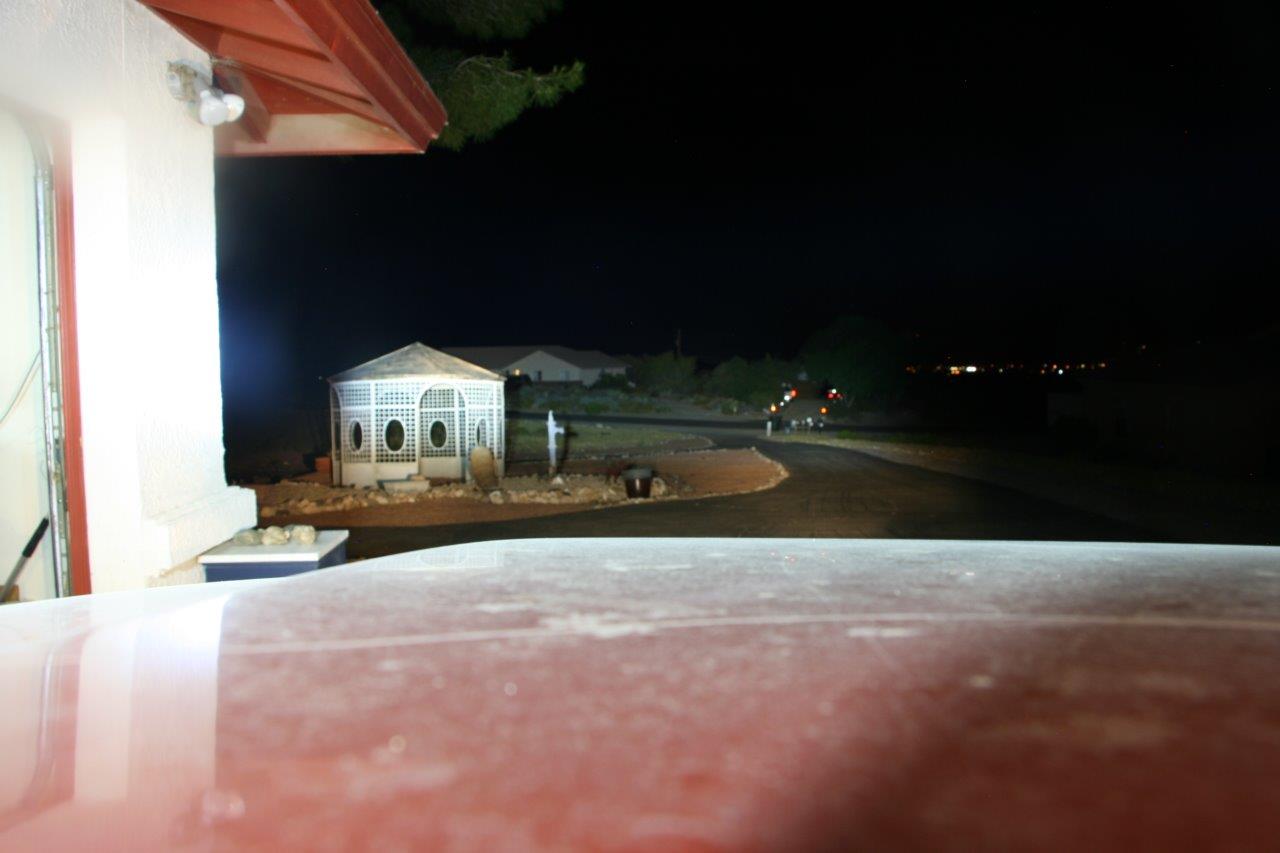
We’ve added the driving lights to the low beam of the headlights and fog lights in this photo.
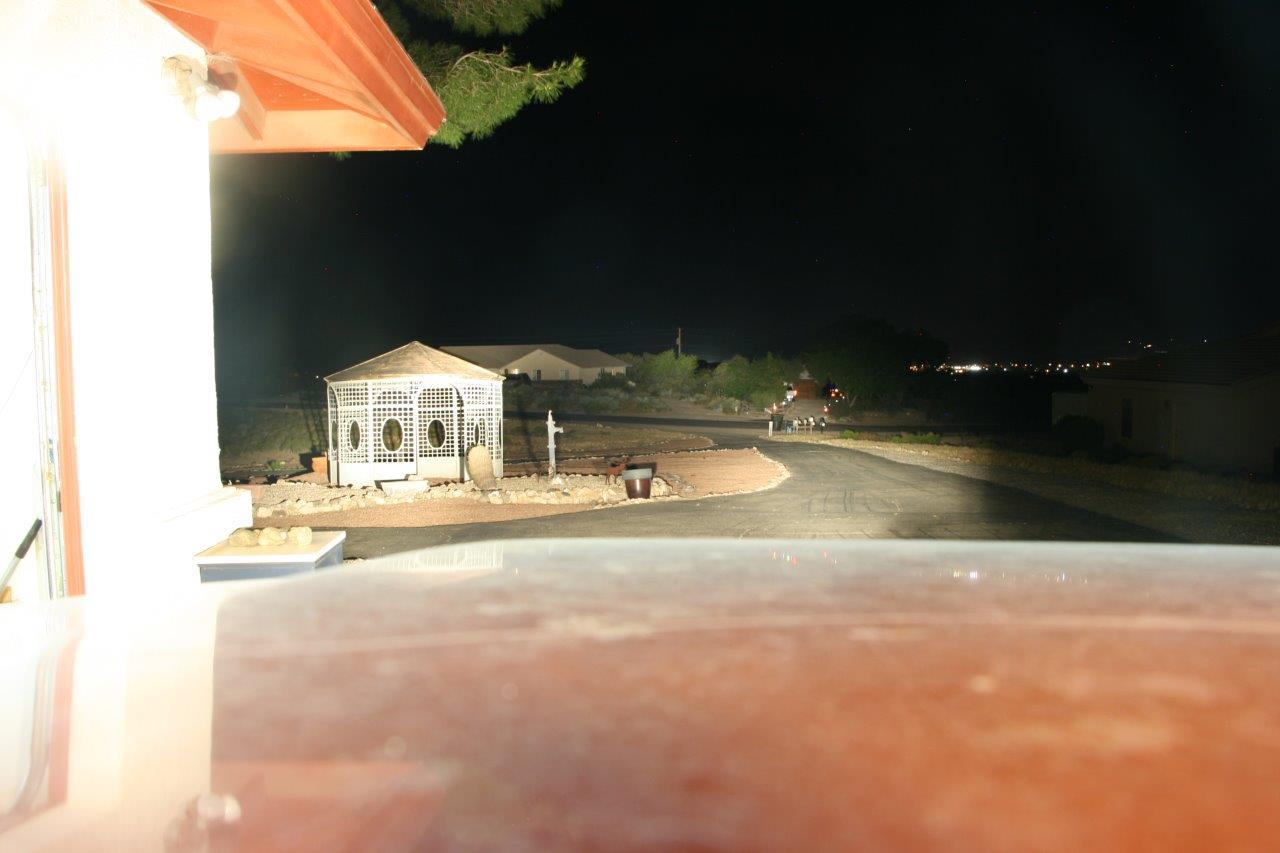
In order to use the cowl-mounted driving lights, we need to turn on the high beams in the headlights and thusly we lose the fog lights. This image shows high beams, grille-mounted driving lights (6,192 lumens), and cowl-mounted driving lights (10,560 lumens).
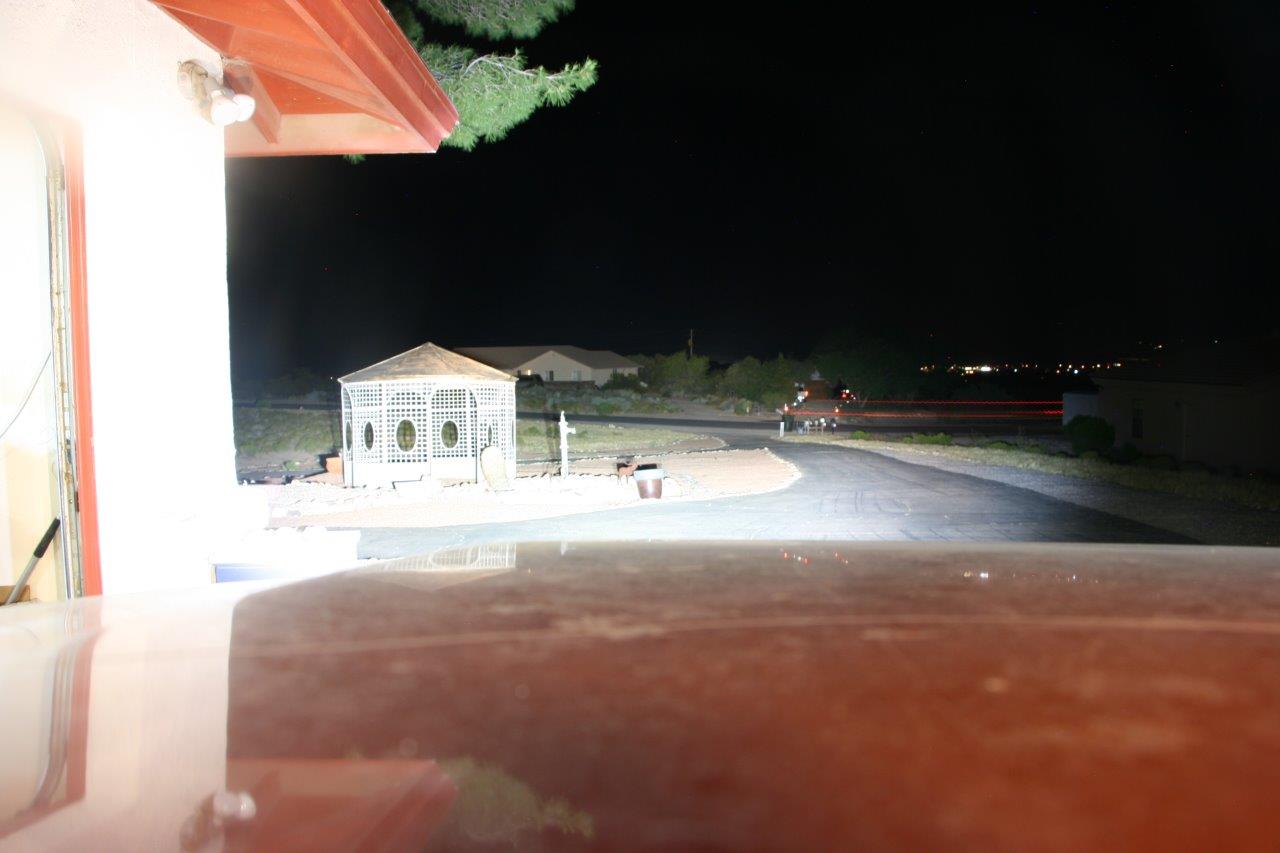
In this image we’ve added the overhead light bar (15,876 lumens) to the lights listed in the previous photo. (By the way, according to Merriam-Webster, a lumen equals approximately one candlepower.)
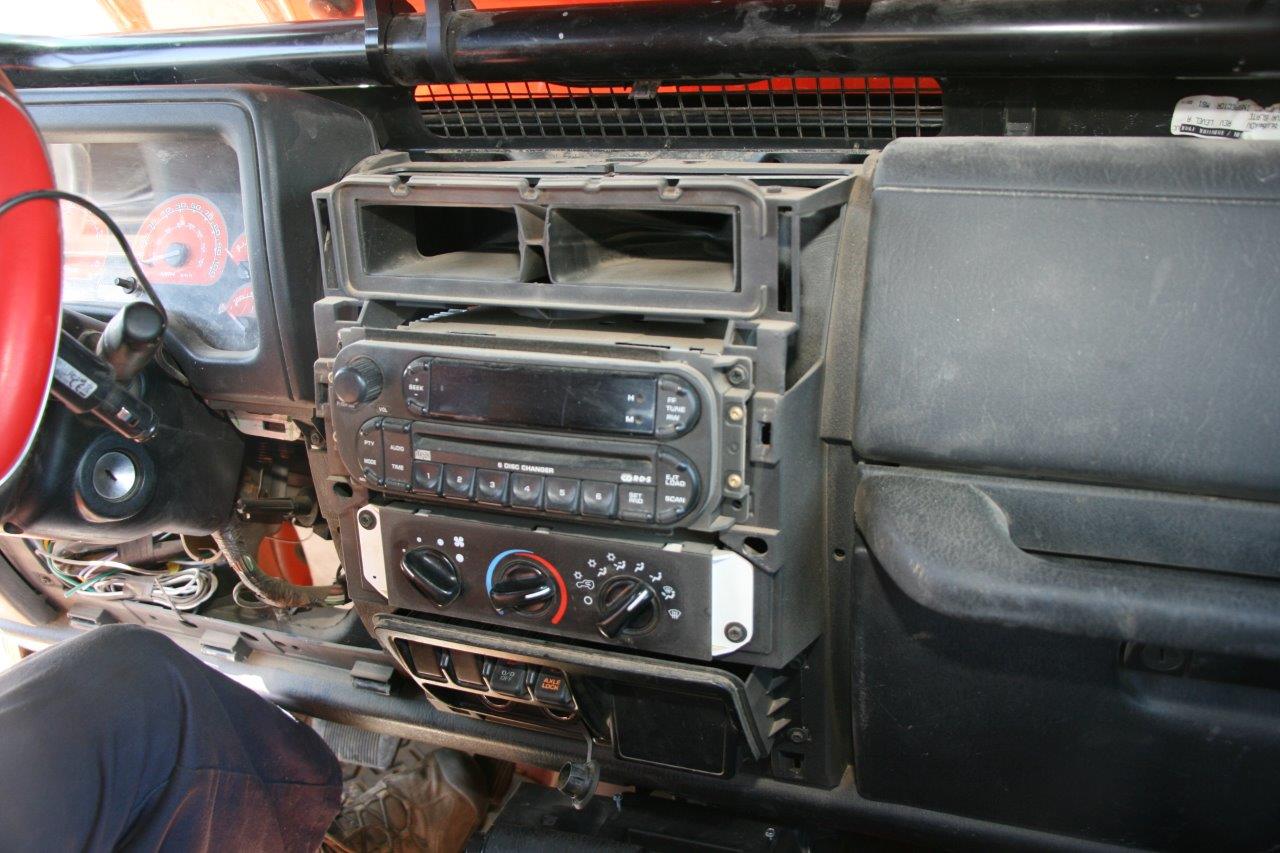
Since the turn-of-the-century models, there are few locations on a Jeep’s dash for switches, so we chose the blank panels adjacent to the locker and overdrive switches.
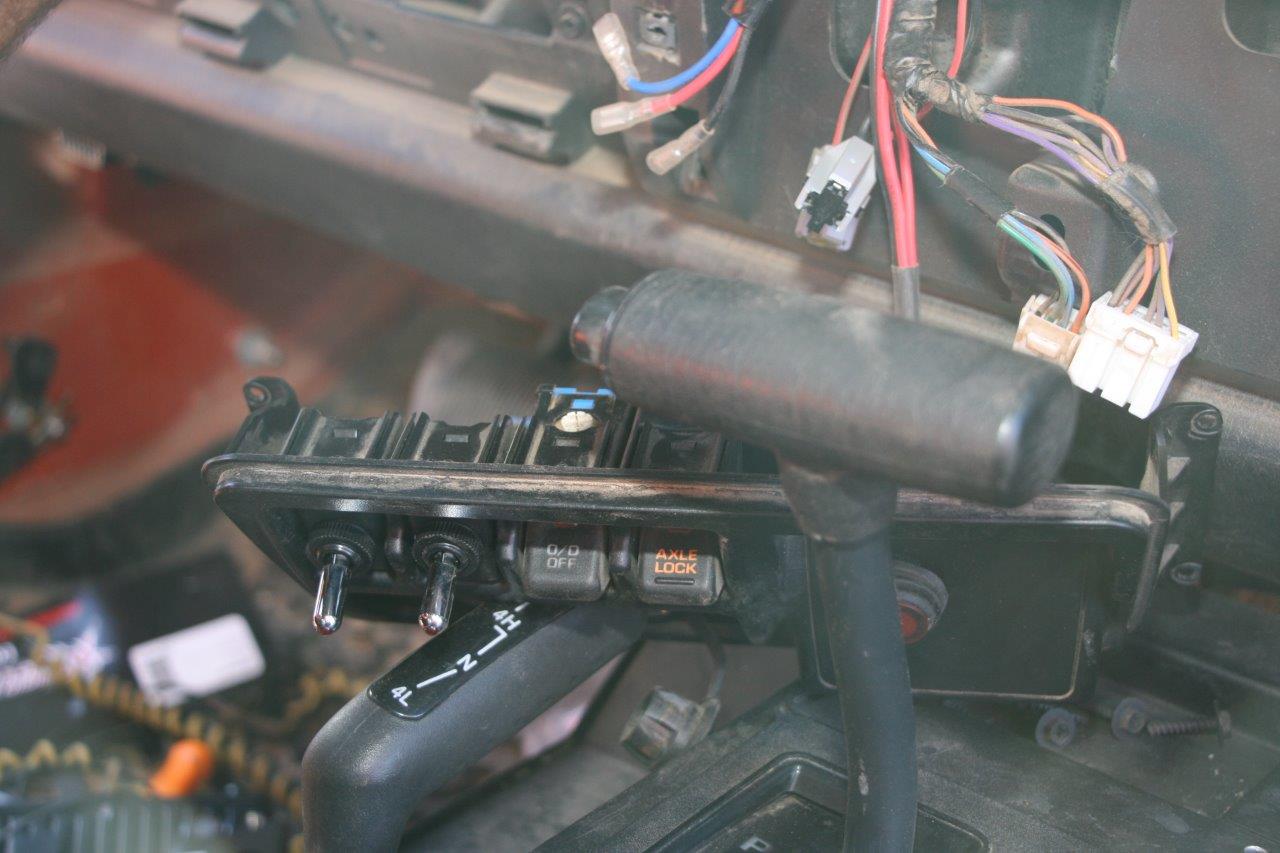
We used the Jeep’s OEM switch and wiring system for the fog lights and added three switches for the light bar and driving lights, one of which came with the light kit. We didn’t have the room for the other two switches so we used toggle switches in which lights indicate when they’re on.
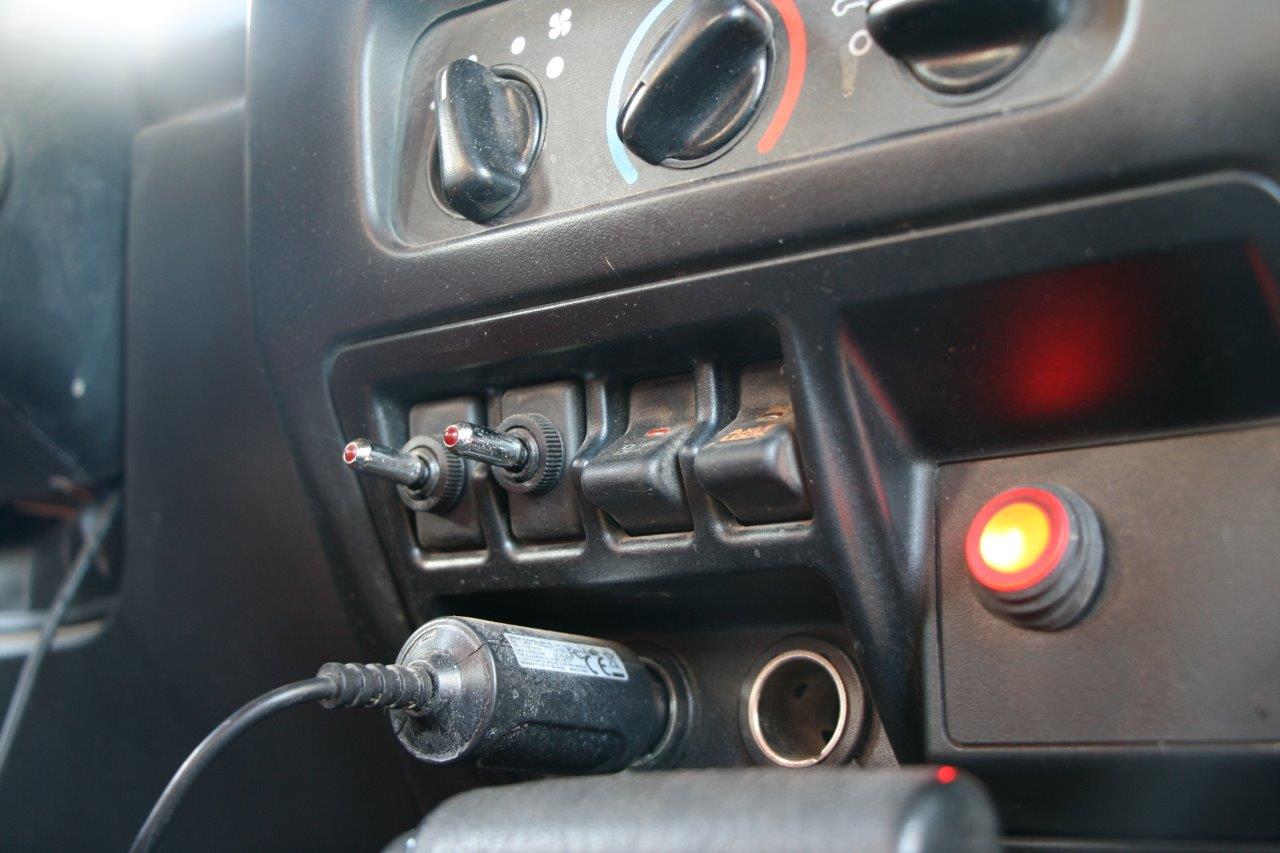
We’ve illuminated the grille driving lights, as you can see the switch is on to warn the driver so they won’t be left on when the Jeep is not running.
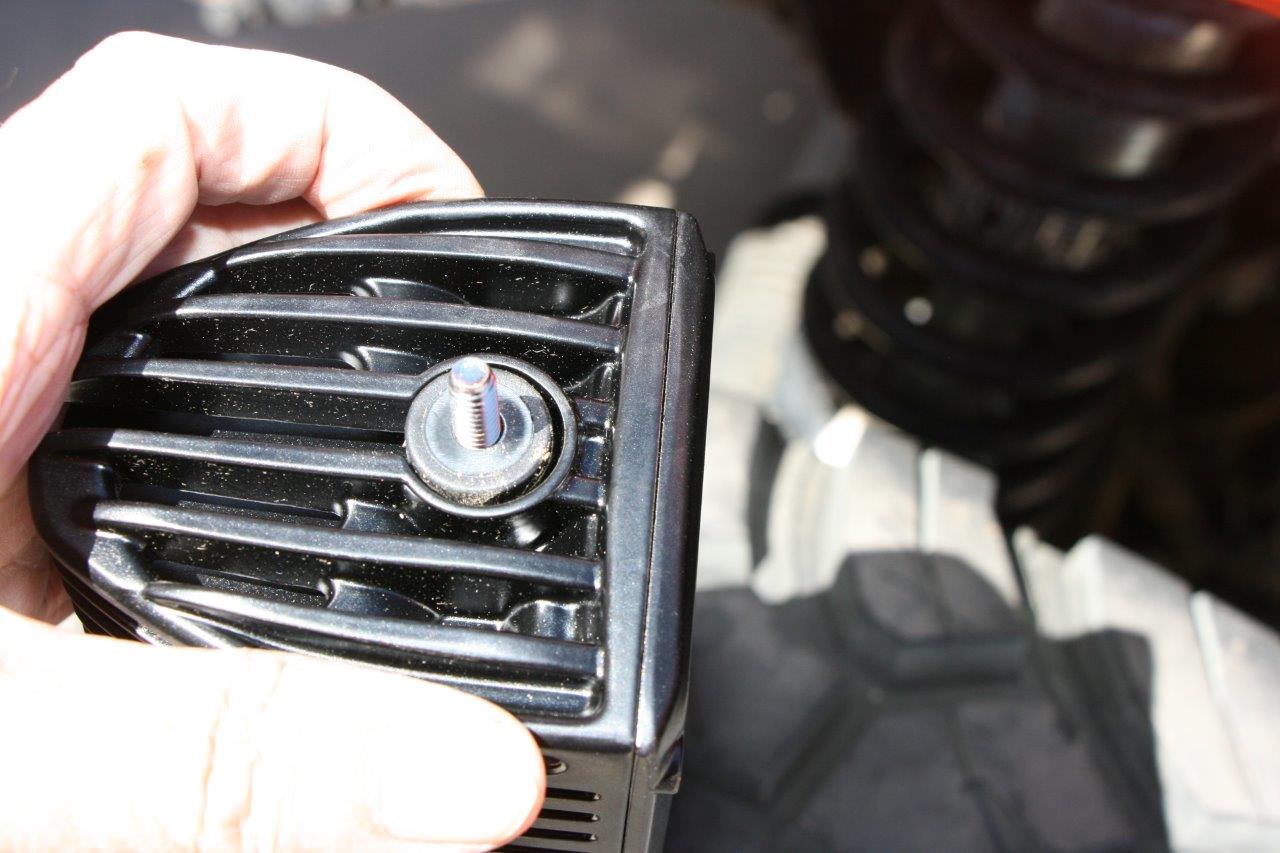
To mount the Dually lights, a bolt slides into position along the slot, and then is held by the casting while the nut is tightened.
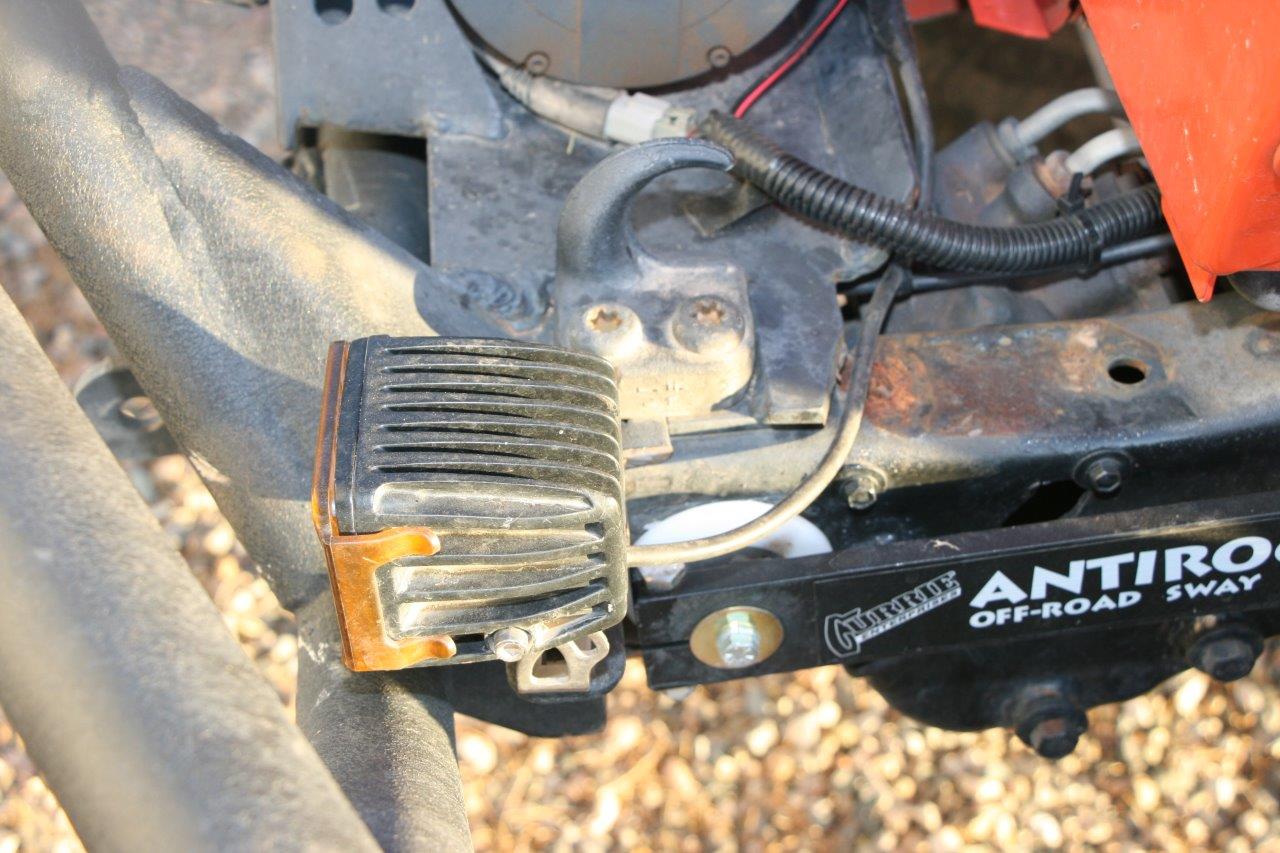
Fog lights should be mounted low to avoid as much reflection as possible while driving in fog or a snow storm. The Rugged Ridge tubular bumper provided protected mounting tabs at frame height.
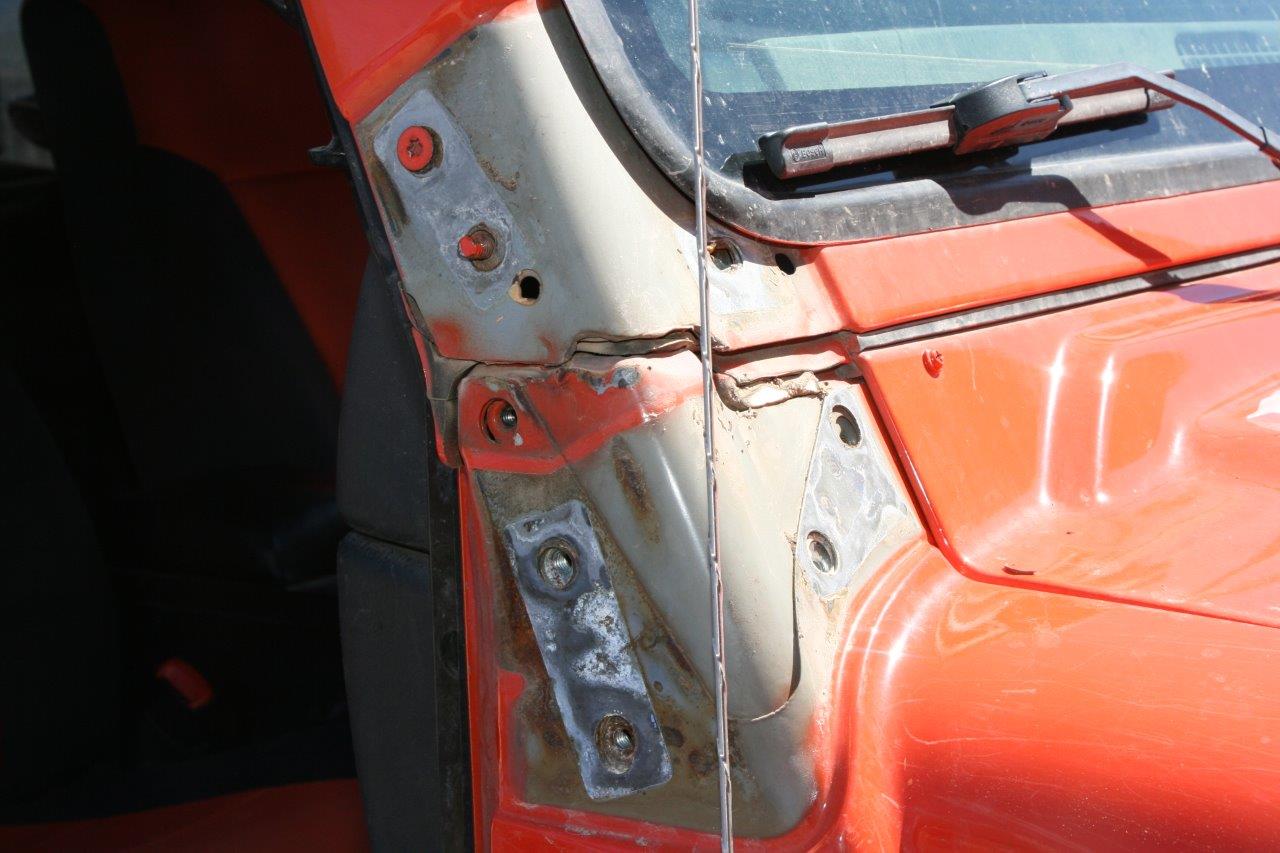
Even though Rigid supplies mounts with their light kits, we still had to make and attach adapter mounts between the Jeep and the LEDs. In this case, we had to remove the windshield hinges in order to mount the Rugged Ridge light mounts.
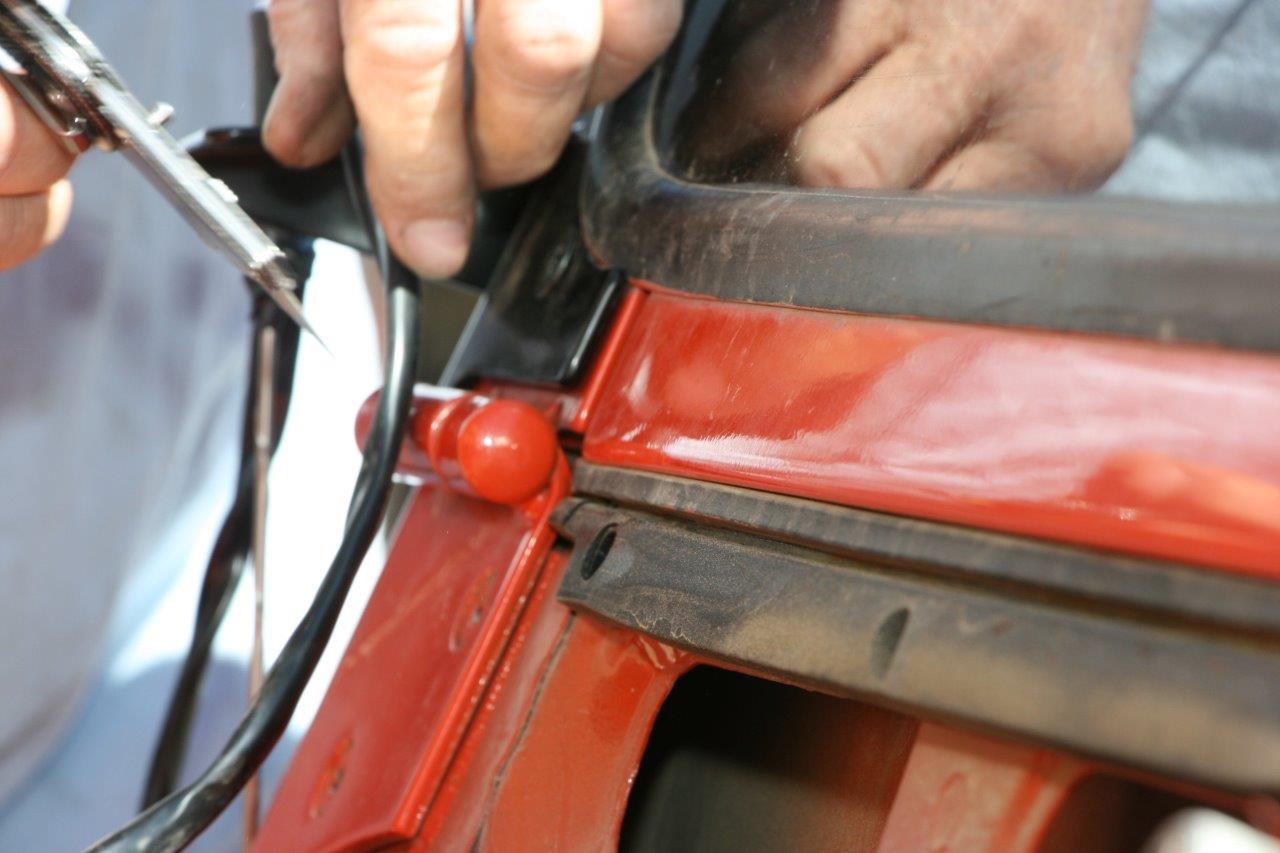
After replacing some of the OEM hinge bolts, we remounted the hinges and then attached the mounts.
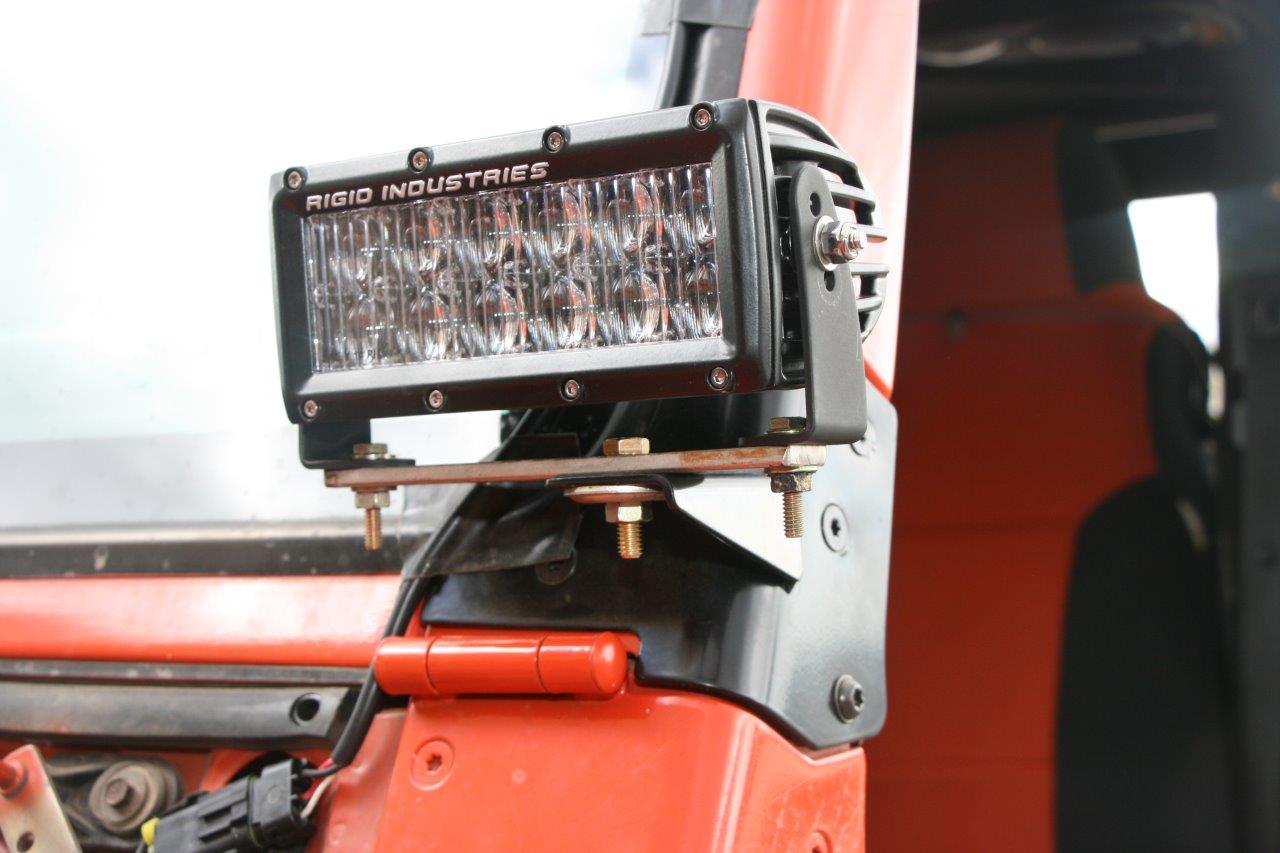
In order to mount the driving lights, we used a piece of flat steel.
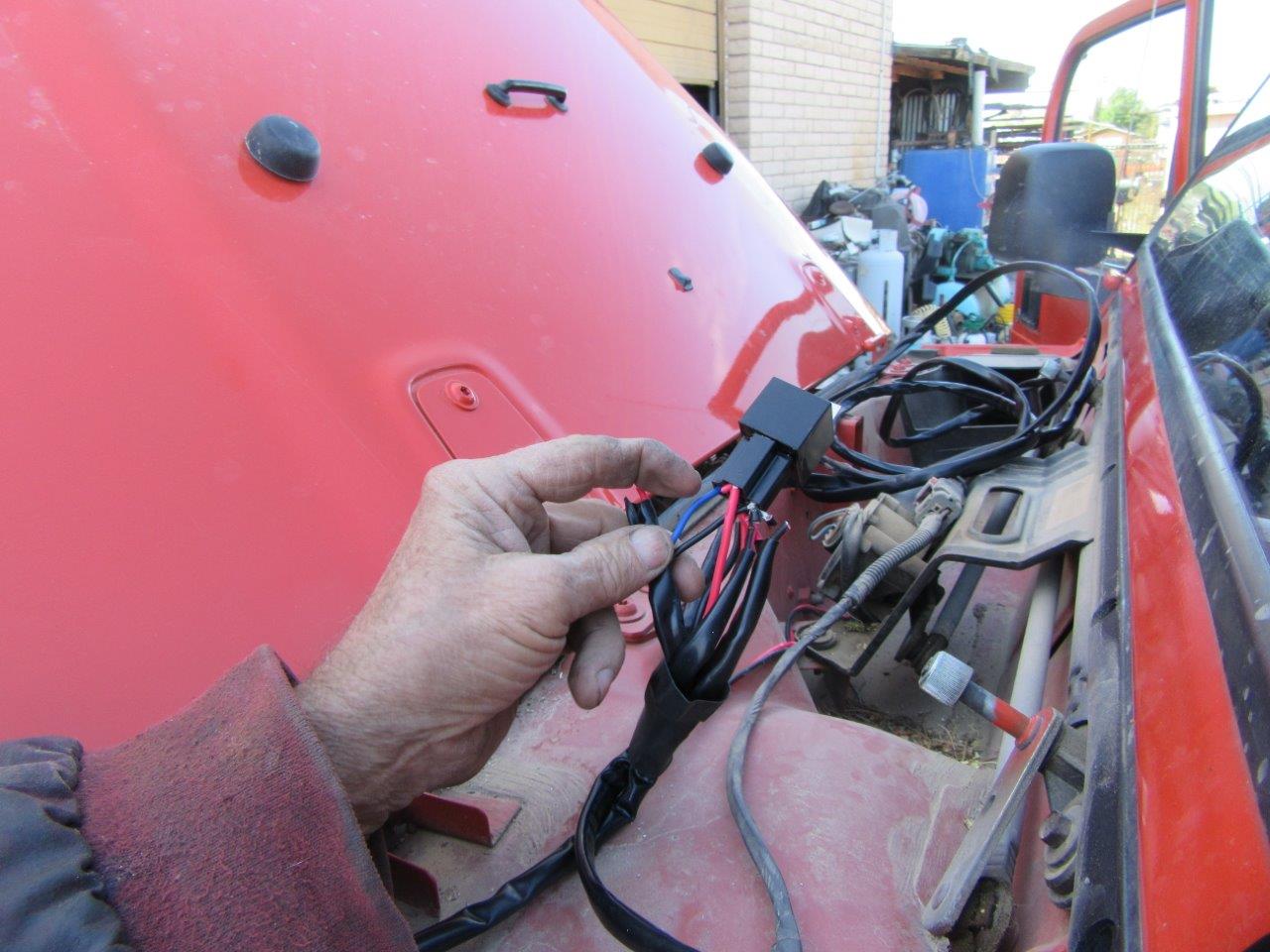
We placed the upper lights’ wiring beneath the cowling, which required temporarily removing the windshield wipers.
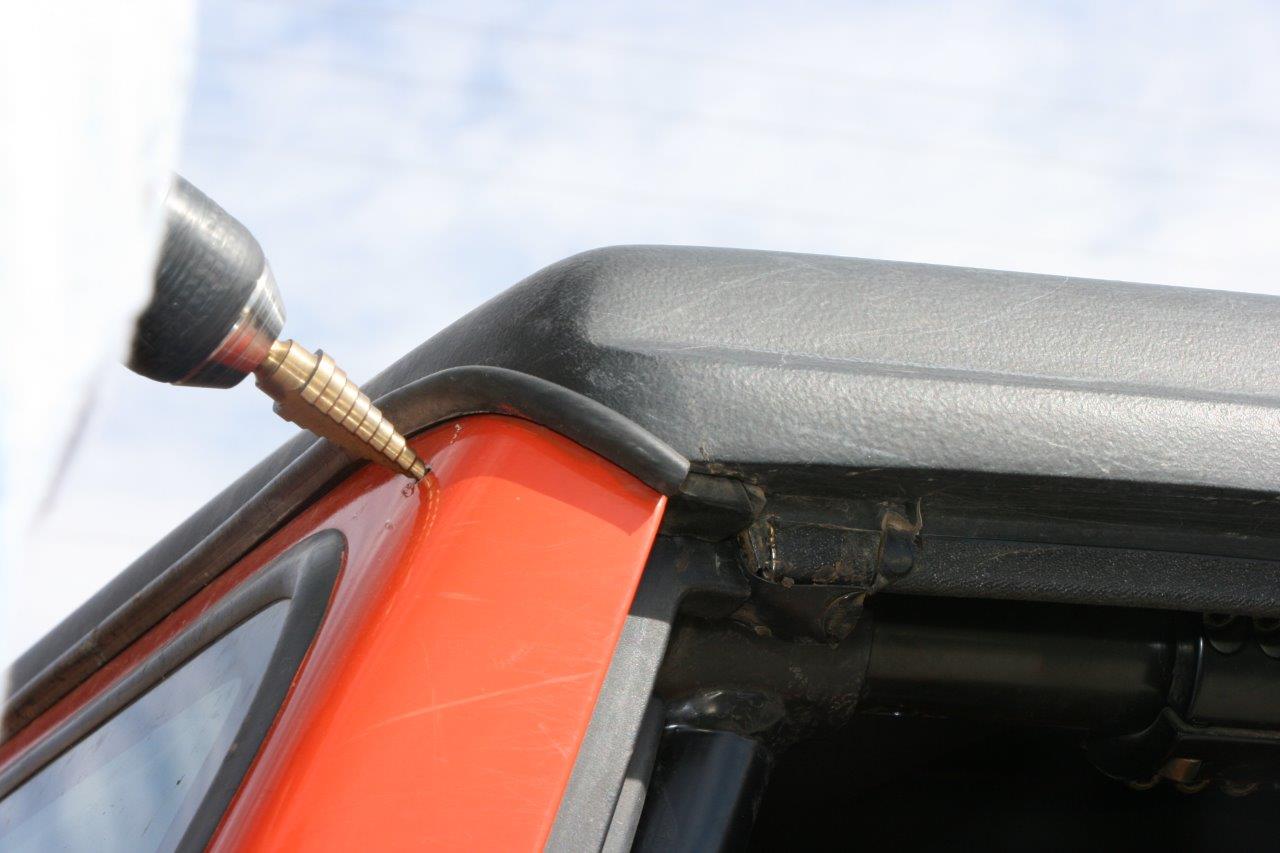
The L-brackets that come with the Radiance overhead lightbar required only one hole on each side.
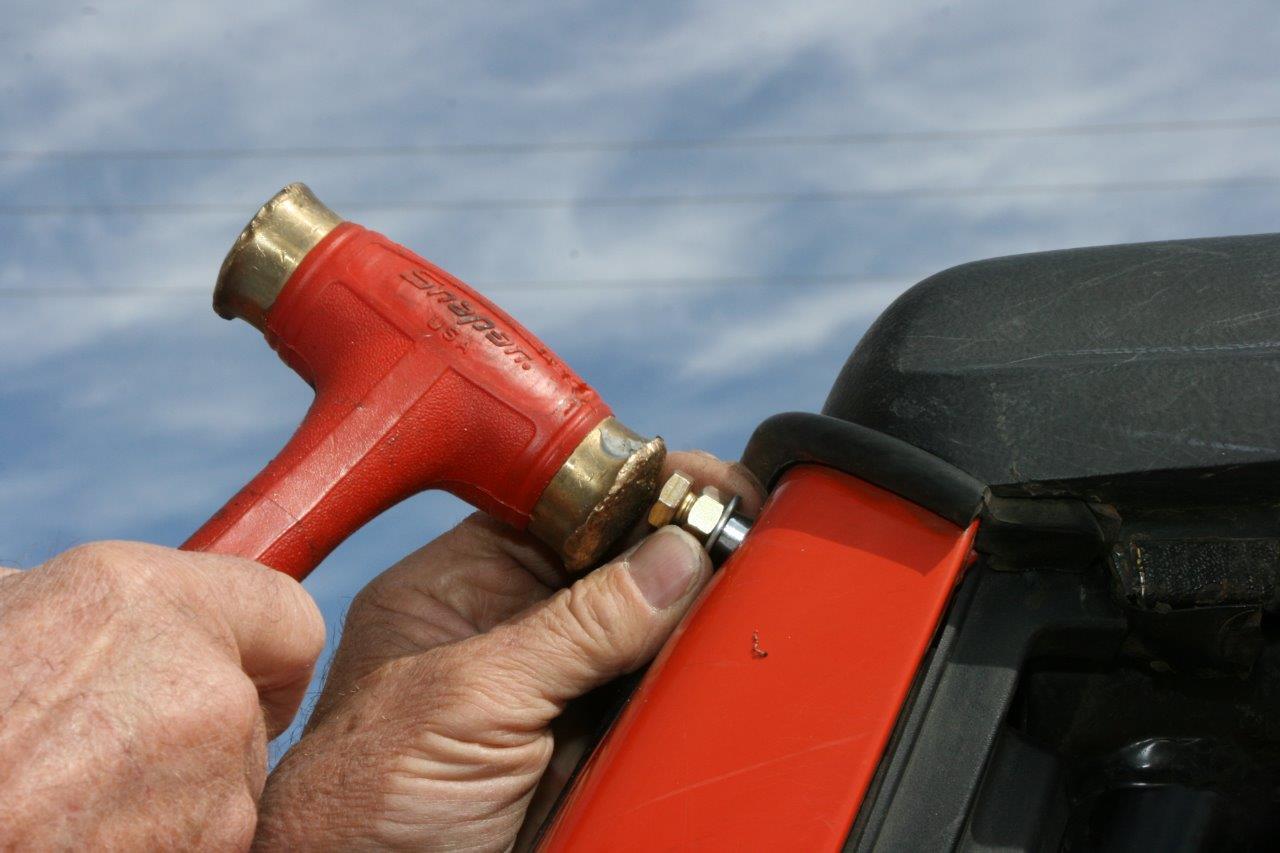
Because the L-brackets use only the one piece of metal on the A-pillar we used special bolts.
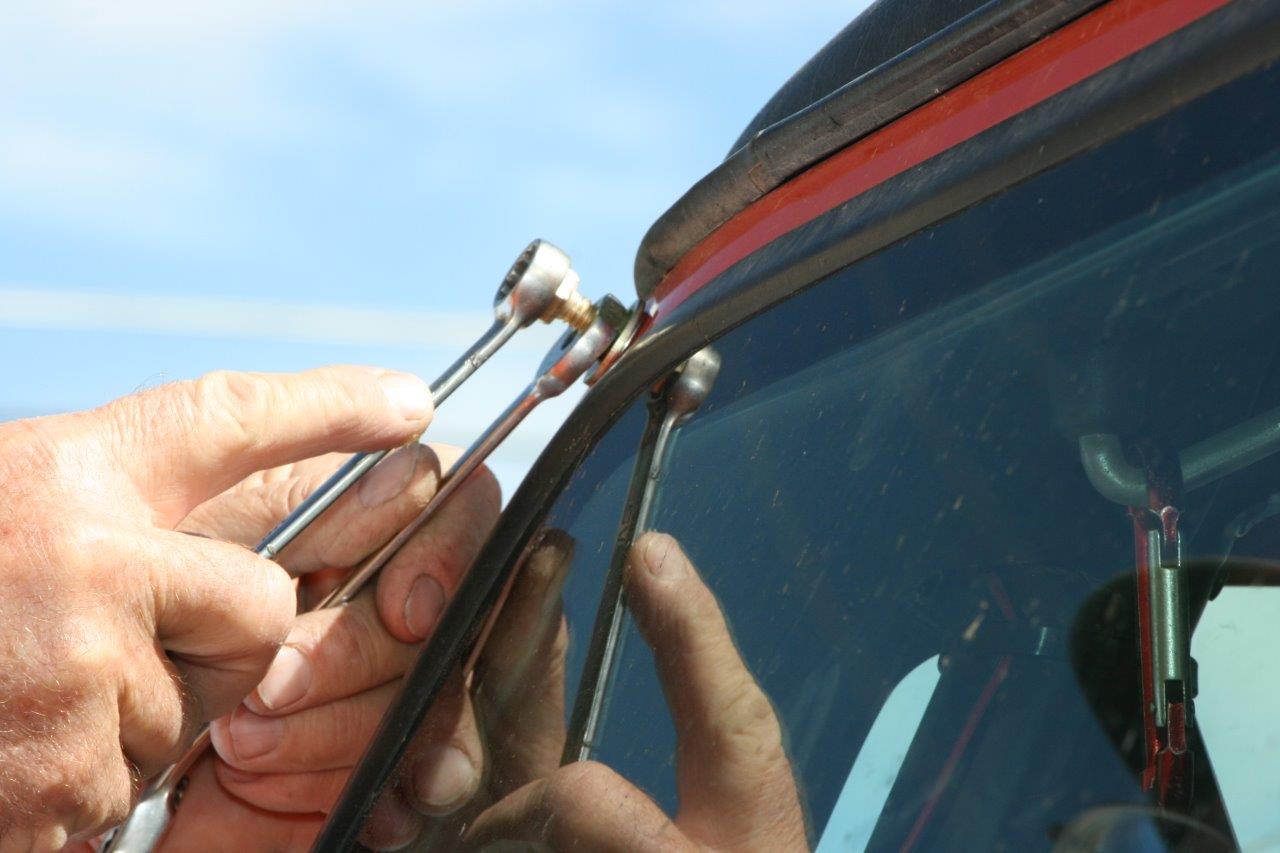
The special bolts required a pair of wrenches to fully seat.
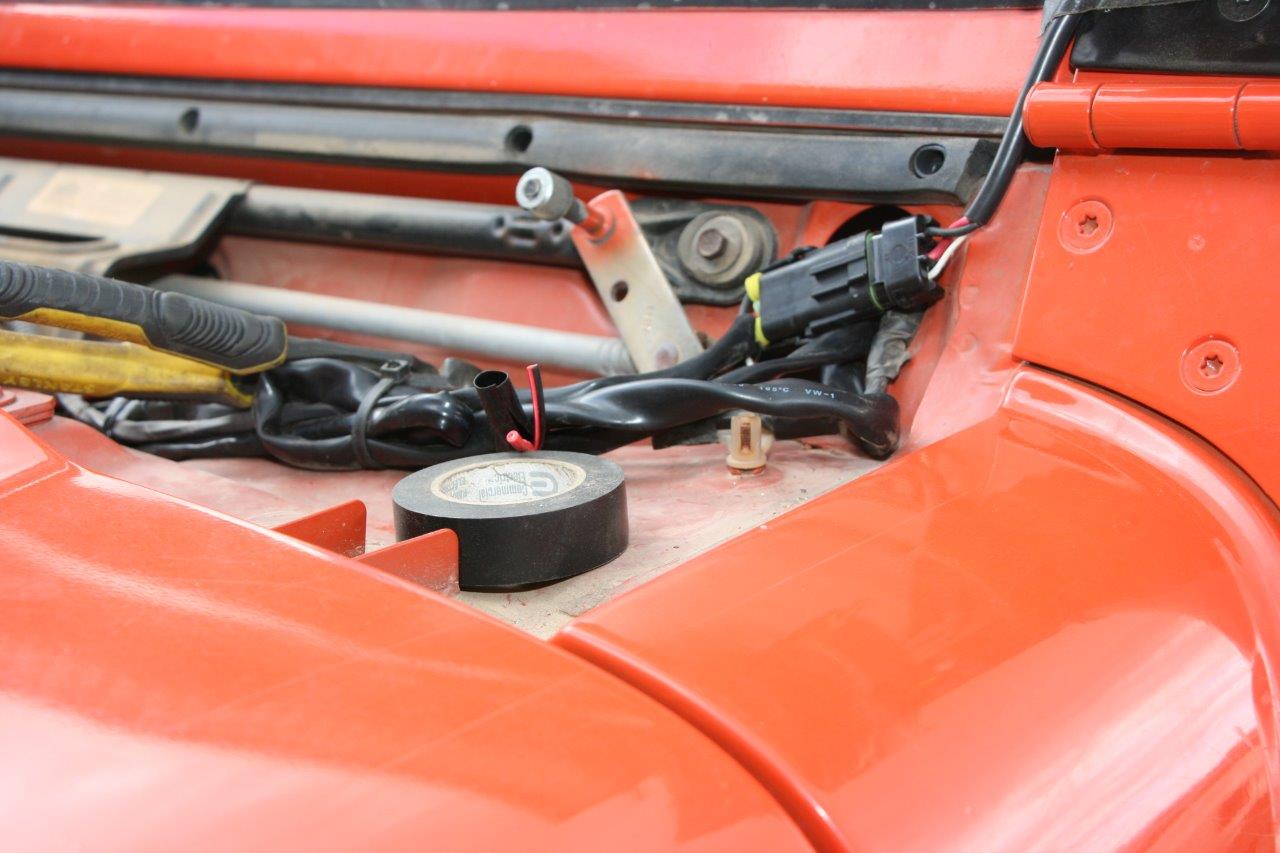
Dave Schupp secured the wiring and made sure it didn’t interfere with windshield wiper movement, and then he replaced the cowling and windshield wipers.
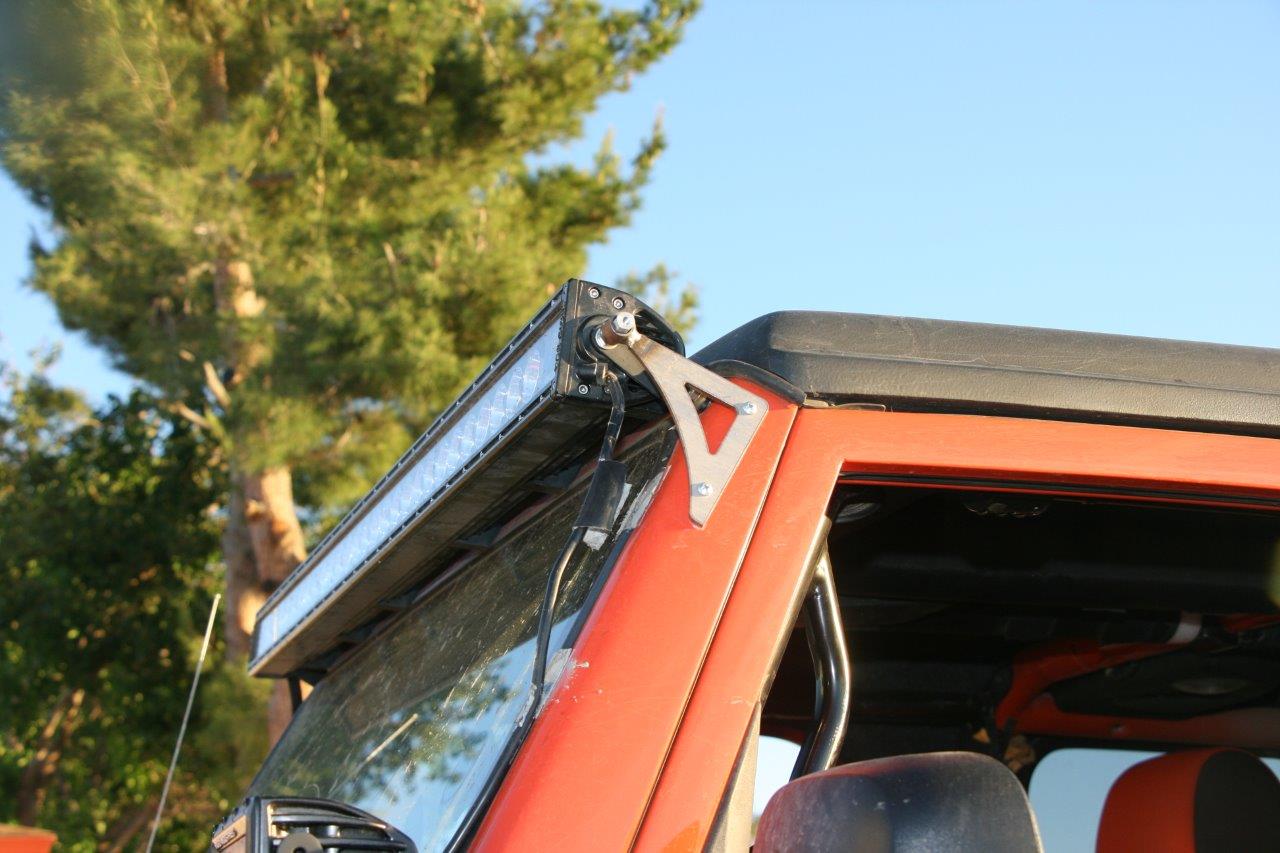
We added the triangle bracket to each side of the lightbar to aid in its support over the technical trails this Jeep is used on.
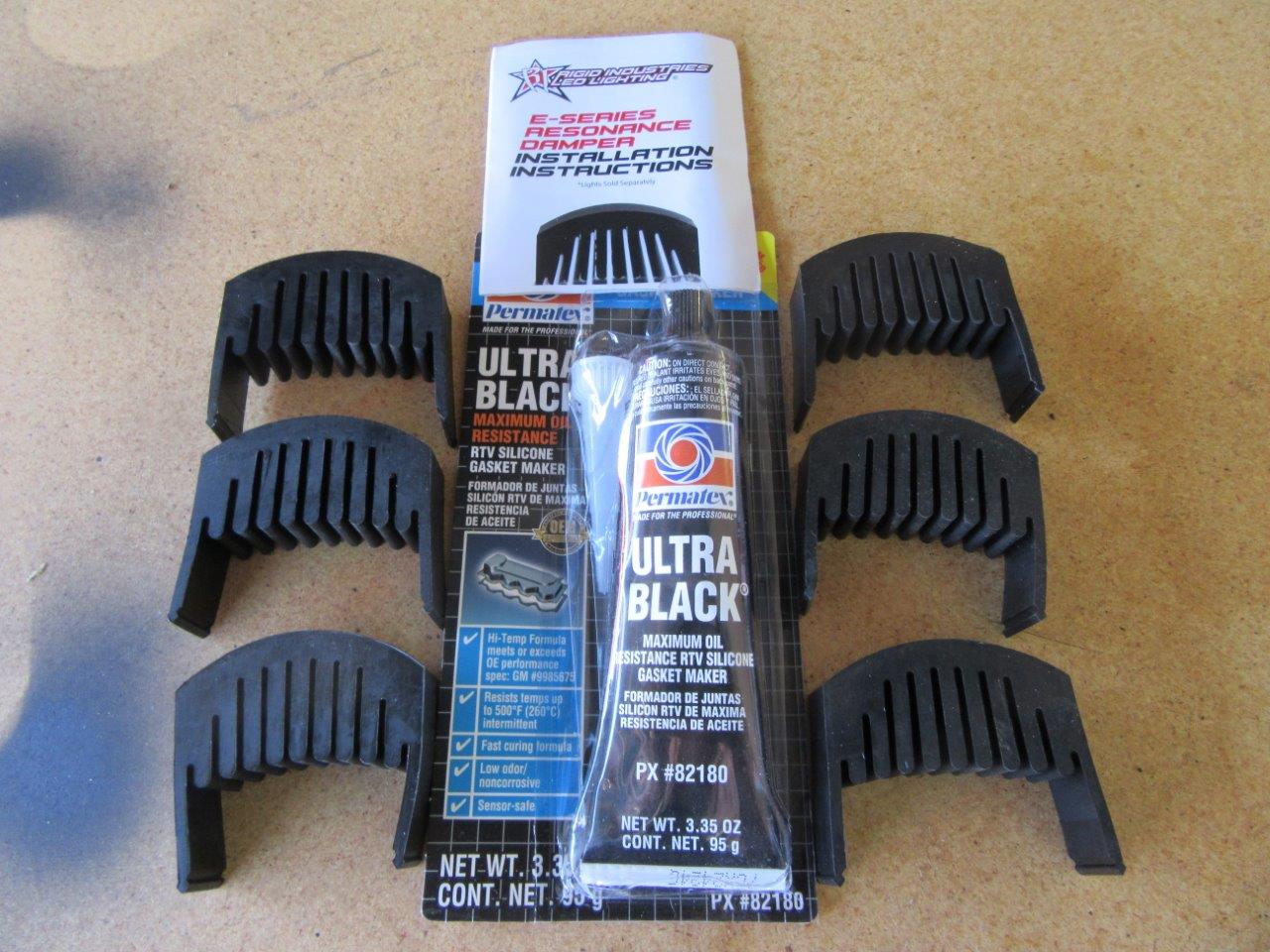
The Radiance’s cooling fins can create a very irritating howl or whistle while on the highway. Rigid offers these rubber bushings—we call them puppy’s feet—in groups of three to dampen the whistling. We used two sets along with the recommended silicone paste, but still experience whistling in certain conditions.
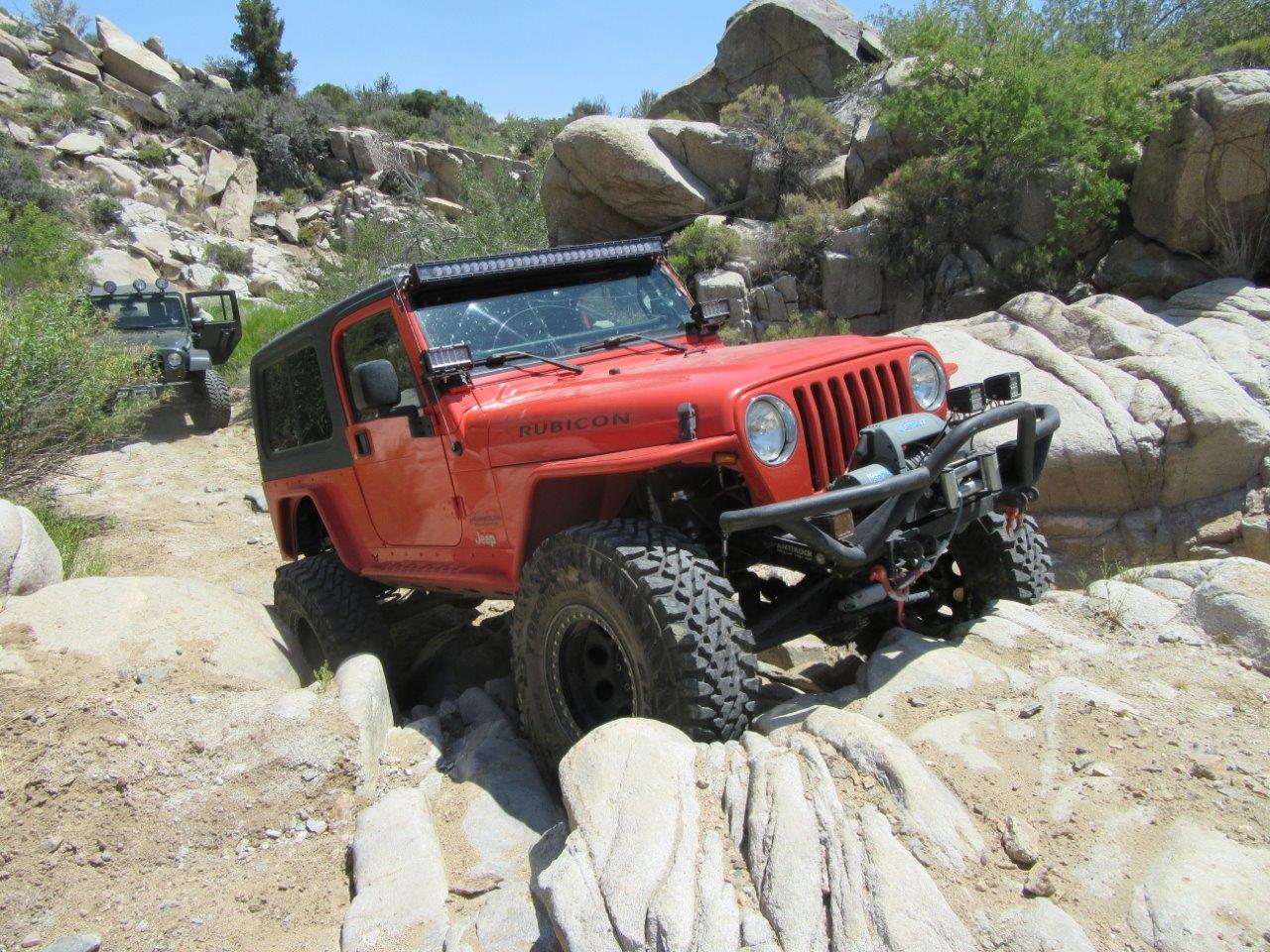
This grade 7 trail outside of Kingman, AZ, is indicative of the trails on which we use this Jeep.
(Photos by Jim Brightly)

Comments